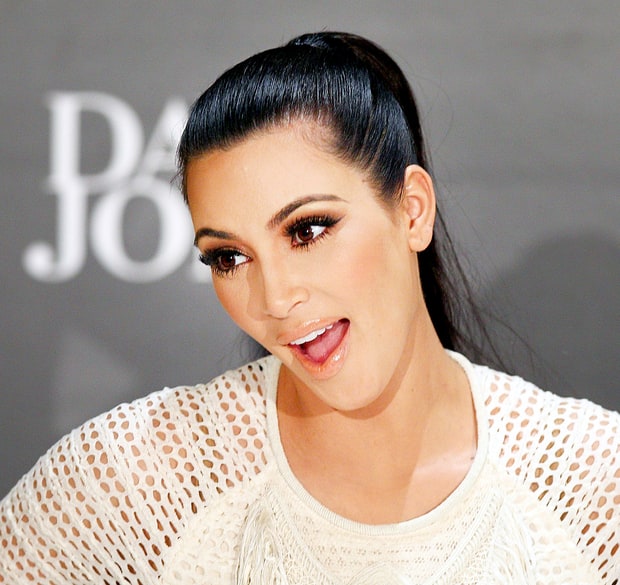Last week in your social media feed, along with photos of Justin Trudeau hugging pandas (and Barack Obama), you may have come across a naked selfie of Kim Kardashian.
Last Monday, the woman best known for her reality show and beautiful butt, posted a photo to Instagram of her hourglass figure strategically covered by black bars. The Internet quickly broke into flames.
Bette Midler was first to stoke the fire. On Twitter, she wrote: “If Kim wants us to see a part of her we’ve never seen, she’s gonna have to swallow the camera.” Millennial celebrities such as Miley Cyrus and Demi Lovato came to Kardashian’s defence — her body, her choice.
It’s just the latest example of the clash between second and third-wave feminists.
Last month, Gloria Steinem and Madeleine Albright said real feminists should vote for a woman president, to which millennials responded that real feminists vote based on politics, not body parts. And don’t forget that time Sinead O’Connor penned an open letter to Miley Cyrus about nudity, in which she accused the 23-year-old pop star of “behaving like a prostitute and calling it feminism.”
Feminists panic like these intergenerational feuds are a PR situation they need to contain. “We are supposed to be fighting the patriarchy, not each other,” we say, but that logic is outdated. It’s precisely these debates between generations that prove the feminist movement is still moving forward.
Second wavers predominantly represented the voice of married, white women. That doesn’t diminish their advocacy for reproductive rights, equal pay and for victims of domestic abuse and sexual assault. But that movement didn’t trumpet the struggles of women from diverse socioeconomic backgrounds, ethnicities and sexual orientations.
Though feminism still faces an uphill battle, it’s a sign of success that the third wave has to confront its own white and middle-class privilege and figure out how to course-correct.
Some of the most important moments in modern feminism have been the result of tensions between feminists. The 47-year-old actress Patricia Arquette pissed off many women when she said backstage at the Oscars last year that it’s time for “gay people and all the people of color that we’ve all fought for” to fight for wage equality. Her comment sparked a useful discussion about how second-wave feminism ignores that queer and ethnic women are part of the movement.
When Nicki Minaj, after being snubbed for an MTV Video of the Year award nomination, tweeted that only videos celebrating “slim bodies” are rewarded, Taylor Swift replied, “It’s unlike you to pit women against each other.” (She, of course, was nominated.) The feud highlighted discrimination in awards shows and underscored that a win for a white, cisgender woman is not necessarily a win for women of color who deal with racism in addition to sexism.
As feminism becomes more inclusive towards queer and transgender women, second and third wavers are having important debates about progressive female identity. When Caitlyn Jenner posed in Vanity Fair last summer wearing a tight satin bodice and a full face of makeup, a 68-year-old woman wrote a New York Times opinion piece about how Jenner reinforced stereotypes of female beauty and thus rolled back hard-won rights.
The author was criticized by many younger feminists as “transphobic” and inflexible, but as more trans women go public, it’s important to talk about how to integrate them into a movement that abhors male privilege. The second-wave feminist perspective is often worth considering.
The feud between Midler and Kardashian, though full of low-blows, raises valid points about the complexities of third-wave sexual empowerment from those who lived through the anti-pornography movement. While women should never “slut-shame” other women, third-wavers should acknowledge the limitations of pro-sex feminism when sexual harassment, assault, sex trafficking and degrading advertisements are still rampant. We should also ask questions older feminists did not, such as why Serena Williams’ body is shamed while Maria Sharapova’s is celebrated and why a white woman’s assault matters more than an Aboriginal woman’s murder.
These discussions show that feminists, rather than being part of the same man-hating, Birkenstock-wearing blob, contain multitudes. The “feuds” between different generations of feminists helps the movement grow. The more mother-daughter debates, the better.


